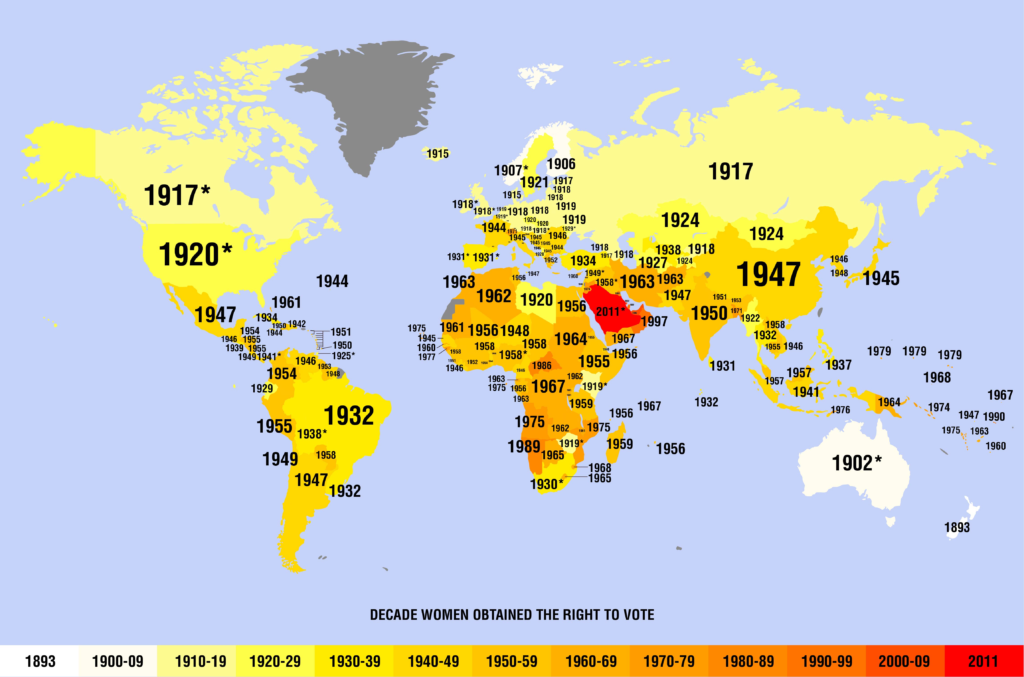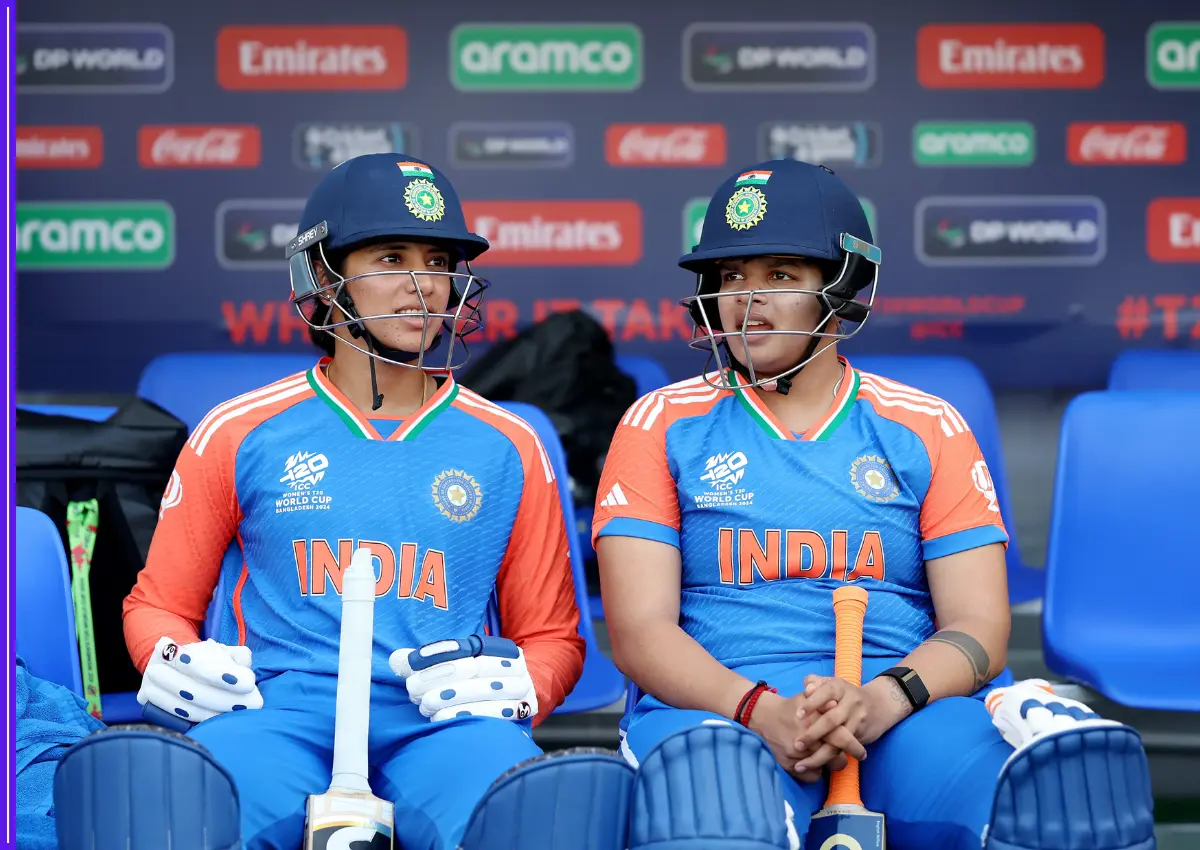Women’s suffrage, or the ability for them to cast ballots in elections, is a relatively new phenomenon in the contemporary world. The earliest permanent establishment of women’s suffrage in a full province (the Pitcairn Islands) did not appear until 1838, despite the state of New Jersey’s 1807–1807 experiment. Most sources concur that no fully sovereign nation would follow suit until Norway in 1913 (though Finland in 1906 and New Zealand in 1896 were both earlier, at the time were technically territories of other countries). This means that women’s suffrage was not widely practiced until less than a century ago.
Now, things are not the same. All countries and territories around the world currently allow women to vote, with the exception of Vatican City, where the pope is chosen by cardinals of the Catholic Church,

who are exclusively male.
The reality of Election Day vs the legal right to Vote
Even if you are legally allowed to vote, you may not always get a fair chance to do so. Women are legally allowed to vote in certain nations or areas, but cultural norms, violence, and harassment at the polls, or pressure from their spouses keep them from exercising that privilege.
For instance, specific cases of harassment or violence against female voters remain concerning, despite the fact that pregnant women in Kenya are granted priority access to the polls, according to the monitoring website Votes without Violence and a 2019 United Nations study on election-related violence.
In a similar vein, upon reaching the age of 18, every Egyptian is immediately registered to vote. But a 2022 analysis from the nonprofit Borgen Project claims that the seemingly reasonable demand for voters to provide a legitimate ID at the polls may instead discourage female voters from casting ballots. In this historically male-dominated society, women are less likely than males to own an ID (along with equal salary and education). Even if they do, their spouse often carries it, giving him the option to withhold it and thereby prevent them from voting if he so desires.
The proportion of women seeking or holding public office is one way to determine if a nation is successfully granting women the right to vote. The ability of women to vote and their experiences at the polls may be more closely examined in areas where there are comparatively few female public office holders.
For instance, among the 73 candidates running for president in Nigeria in 2019, only six were women, and all of them withdrew their candidacies before the poll. Despite the fact that 47% of voters are female, women now hold fewer than 7% of national governing seats in Nigeria (compared to an average of around 26% worldwide). Experts, however, believe that there is a simple explanation for this discrepancy: a patriarchal national mindset that supports the oppression of women in several contexts.
The famous statement made by President Muhammadu Buhari in 2016 “I don’t know exactly what party my wife belongs to” is one example of this mindset. She should really be in the living room, kitchen, and other areas in my house. Comments like this frequently suggest that there is space for development when it comes to women’s rights in a certain nation.
Equal opportunity subjugation
Only a few nations restrict women’s and men’s voting rights equally. For instance, just 12% of all men and women in the United Arab Emirates were allowed the right to vote in the most recent election; these candidates were chosen based on unknown criteria, while Brunei, an absolute monarchy, has not had a nationwide public election since 1962.
The majority of the world’s nations and territories achieved women’s suffrage on the dates shown in the table below. These vary from nations where women’s suffrage is widely acknowledged and encouraged to those where women are legally permitted to vote but frequently face barriers to doing so.





